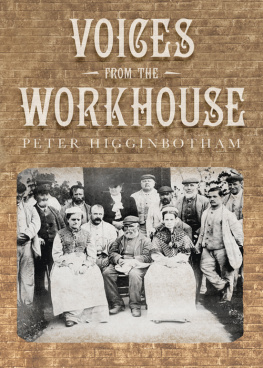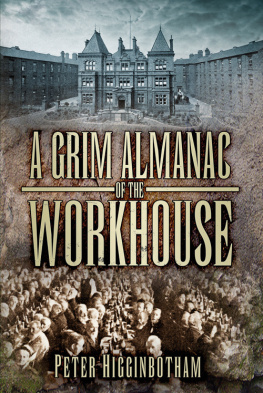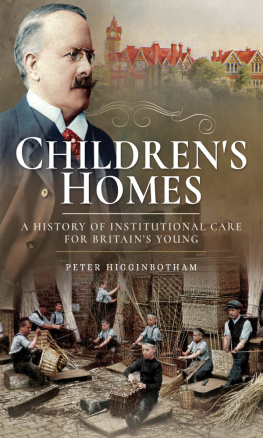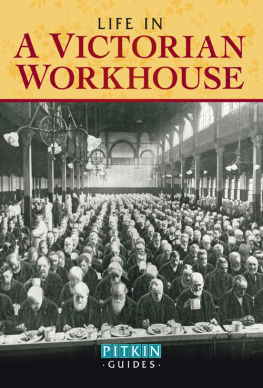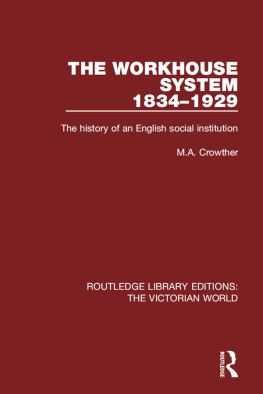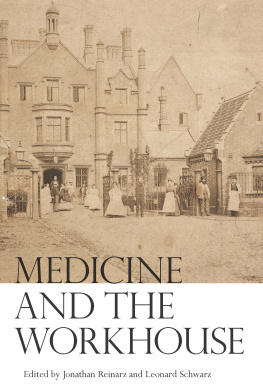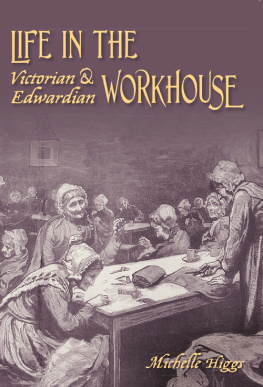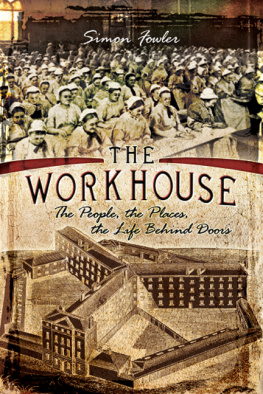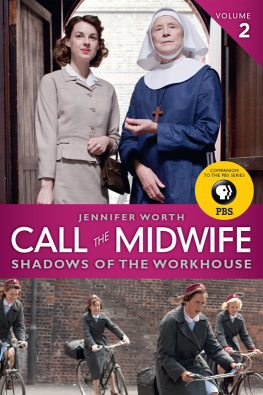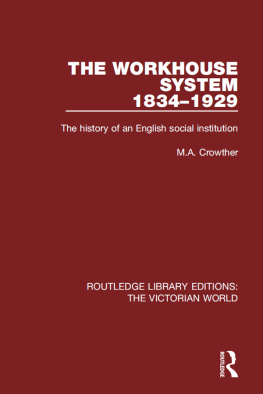
CONTENTS
Richard Ellis: Profitable Employment of Paupers on Workhouse Land

G RATEFUL THANKS ARE DUE to the following: Chris Jones and the Carmarthenshire Historian digitisation project (carmarthenshirehistorian.org) for the extracts from Workhouse Days Remembered by E.V. Jones; Hertfordshire Record Publications for extracts from The Diary if Benjamin Woodcock; The London Record Society for extracts from Richard Huttons Complaints Book; Professor Tim Hitchcock for his transcription of the Kearney appeals; Delia Campbell for the memoirs and picture of her father Charles Burgess; PAC Holdings for permission to include the extract from My Autobiography by Charles Chaplin; Random House Group and University of Reading, Special Collections for the Rutherford letter. The Chell workhouse image is courtesy of The Potteries Museum & Art Gallery, Stoke-on-Trent, with special thanks to Sam Richardson. The image of Thomas Hartleys letter (MH 12/14019/195) is reproduced by courtesy of The National Archives. The text of Hartleys correspondence is Crown copyright and reproduced under the Open Government Licence (www.nationalarchives.gov.uk/doc/open-government-licence). All other illustrations are from the authors own collection.

O VER THE PAST couple of decades, a great deal has been written about the workhouse and, more generally, about the wider poor relief system of which it formed a pivotal part. In addition to general surveys of the system,
What is common to virtually all this body of literature, and also to the great majority of previous writing on the subject over the past three or four centuries, is that it has been generated in the main by those who have had no first-hand experience of the institution they are discussing. The present-day limits on human longevity inevitably mean that writing about any event that took place more than about ninety years or so ago will not be based on direct personal testimony or recollections but on other accounts which themselves may often be second-hand.
That is not, of course, to say that such studies are any the worse for that. An absence of personal involvement and the perspective offered by the passage of time can make for a more measured appraisal of past events. A dispassionate tracking of, say, the annual statistics for expenditure on workhouse accommodation for different categories of inmate, or examining the public pronouncements or private correspondence of politicians of the day, can undoubtedly inform our understanding of how and why particular policies were pursued, compromises made, and events unfolded in the way that they did.
On the other hand, hearing from those who in a variety of roles passed through the doors of a workhouse and experienced conditions there for themselves, can provide a different yet equally valuable insight into the operation of the workhouse system.
Although it is workhouse inmates that perhaps most readily spring to mind as the source of personal testimony, accounts of life inside are relatively few, particularly bearing in mind the numbers who, over the years, resorted to the house. The reasons for this may include the often basic literacy of those concerned, a lack of opportunity or incentive to record such matters, and the limited audience for such accounts. Apart from the pauper inmates, however, many others had a first-hand acquaintance with the institution visitors of various sorts, workhouse staff and their families, local administrators, official inspectors, reformers, journalists, social explorers, or even just the plain curious. The words of these individuals come down to us in a variety of forms letters, songs, poems, autobiographies, newspaper articles, and official reports and inquiries. In more recent times, the activities of local historians have preserved a wealth of informal reminiscences via the medium of oral history projects and collections.
While many authors have drawn upon such accounts, for example to support or illustrate a particular argument, their quotations are usually brief. Where longer extracts have occasionally made an appearance, they have generally been limited to a specific individual, theme or time period. The aim, in compiling the present volume, has been to provide a diverse and wide-ranging collection of fifty different workhouse voices, covering a period of almost 300 years, and within the limits of space available to include rather more than the usual one or two sentence sound-bite.
Those writing or speaking about their experience of or involvement with the workhouse can often provide us with valuable insights into how an institution was run, the character or behaviour of inmates and staff, or small details of its operation which may not be recorded elsewhere. Their own reactions and feelings about the establishment can also add much to our understanding. Personal testimony should not, however, be assumed always to be truthful or unbiased. The authors of many of the examples included in this book were pursuing particular agendas, with their words intended to evoke sympathy for themselves, to entertain, to shock, to substantiate a complaint or grudge, to obtain a better salary, to reprimand, to evade, to bring about reform, or to sell newspapers.
In modern times, the workhouse is often portrayed as an unremittingly grim institution, with its inmates routinely subjugated, abused and dehumanised. However, as several of the examples in this book illustrate, this is a rather distorted picture. Workhouses could indeed be badly run, with inmates particularly in the mid-nineteenth century being poorly treated and accommodated in far from wholesome conditions. However, conditions did gradually change, with improved medical care, more varied and better quality food, and a relaxation of petty regulations. Inmates too, were not always passive and submissive but were quite capable of playing the system to their own advantage, as is made clear in several of the pieces included here.
For a small and shrinking group of individuals, the existence of the workhouse is still within living memory. Ive had the pleasure of talking to several such people and some of their recollections are included in this volume. A question Im often asked in this regard is when did the last workhouse close? My reply usually begins with the words, well, it all depends One candidate for marking the end of the workhouse is 1 April 1930 when legislation came into effect abolishing the Poor Law Unions and their Boards of Guardians who had administered the poor relief system for the best part of a century. On that date, responsibility for public assistance passed to county and borough councils. Under the new regime, some workhouses were closed but the majority continued in operation rebranded as Public Assistance Institutions (PAIs). However, since PAIs inherited existing workhouse buildings, staff and inmates, there was usually little to distinguish them from what had gone before. Indeed, PAIs invariably continued to be referred to locally as the workhouse. During the 1930s, some former workhouse infirmaries, particularly those in urban areas, were appropriated by local councils as municipal hospitals with new facilities such as maternity units being added. Others languished as largely neglected homes for the elderly or chronic sick. The inauguration of Britains National Health Service in 1948 saw the end of PAIs, with some premises being disposed of, while others were incorporated into the new system as hospitals, elderly care homes, or other more specialised establishments. However, the adamant refusal of many elderly people to enter a hospital or old peoples home located in a former workhouse continued for very many years afterwards.
Next page
